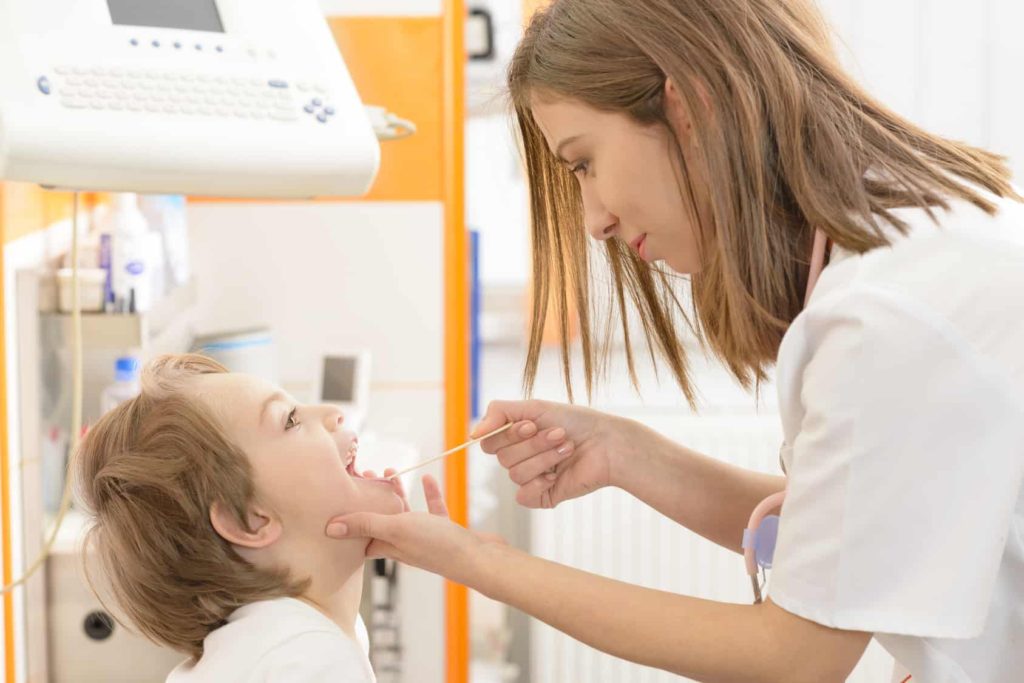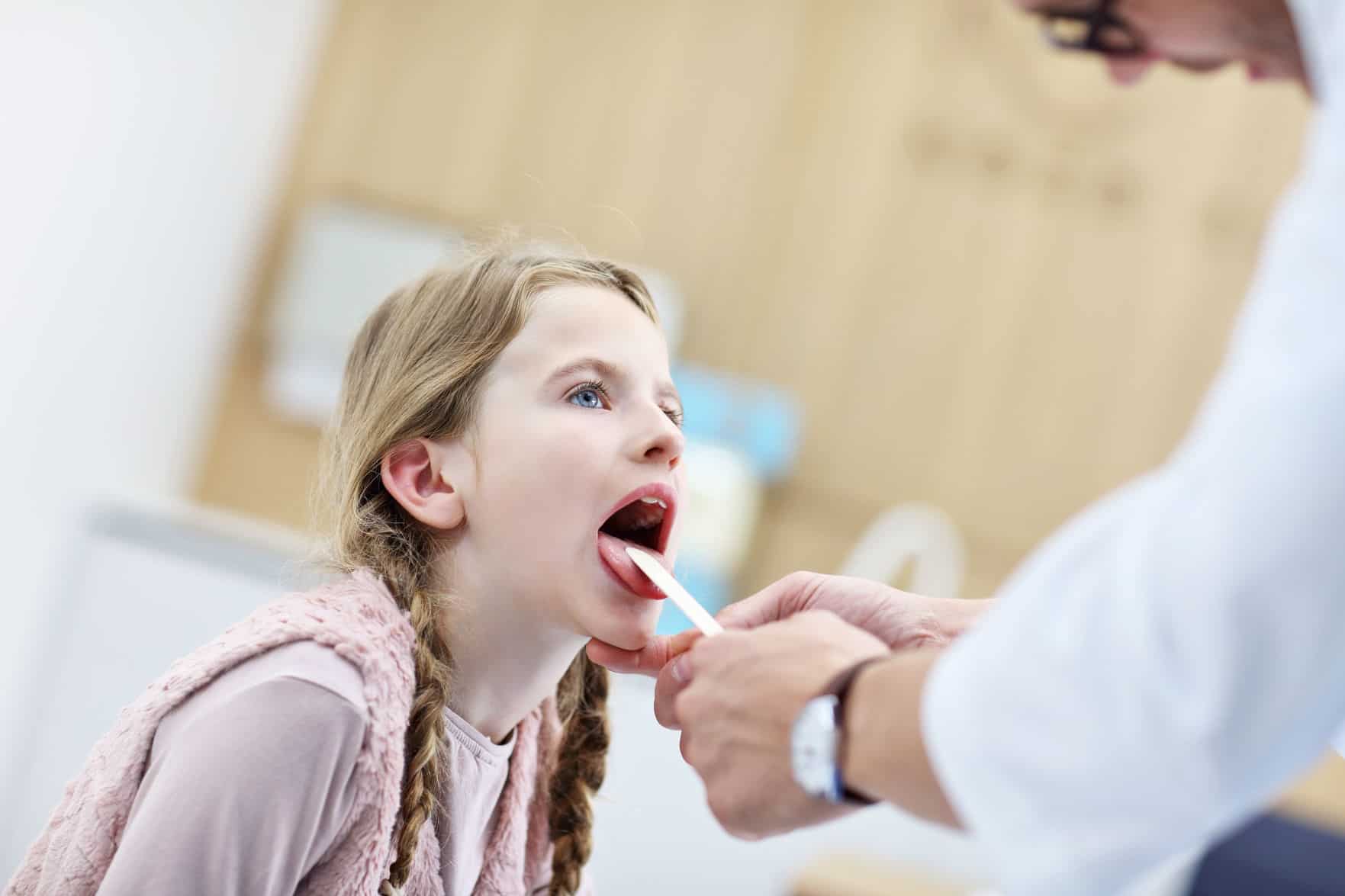Have you been worried about your child’s frequent complaint about sore throat or discomfort in his throat? He must be experiencing one or two of strep throat symptoms. Essentially, strep throat is a usual sore throat type occurring in children with ages between 5 and 15 years old. With this illness, doctors conduct a quick evaluation to see if strep throat has possibly taken place.
In addition, strep throat is a bacterial infection in the tonsils and throat as a result of Group A Streptococcus bacteria. However, viruses, not bacteria, are results of frequent sore throats.
Also, Group A strep can spread through close contact with droplets from a person with a cough and cold.
If your child happens to touch his nose, eyes or mouth after he touched something else with droplets on it, he is possibly to become sick. In addition, no other person, not even your child’s doctor, can conduct diagnosis for strep throat by merely looking at his throat. Instead, the doctor swabs the throat to see if your child, indeed, has strep throat.
How Your Child Can Possibly Get Strep Throat
Any individual, specifically a child who develops strep throat, usually experiences symptoms that begin from 1 to 4 days after they initially acquire the infection or incubation period, as to how the medical experts call it. Relatively, such symptoms may range from mild to serious or severe. More often than not, bacteria cause strep throat.
The Group A Strep stays in the throat and nose and can simply spread and infect other people, as well. It is vital to know that all infected people are not experiencing the symptoms or seem ill. Nevertheless, infected individuals can spread the bacteria by sneezing or coughing, and this develops tiny respiratory droplets containing the bacteria.
The other possible sources of strep throat include:
- Breathing in those droplets
- Touching an object with droplets on it, then touching his nose or mouth
- Drinking from one glass or eating from one plate as the sick person is using
8 Symptoms of Strep Throat to Watch and Monitor
If your child is suffering from a sore throat, especially if fever and other similar symptoms accompany it, you should consider taking him to a healthcare professional for a consultation. More often than not, it is frequently quite challenging to identify exactly whether or not, there is strep throat if there is no assessment from a professional.
Moreover, there are other severe causes of this disease that may need substitute treatments such as peritonsillar abscess, for one.
You child has a sore throat or, has been diagnosed with strep throat if he is experiencing any, some of all of these common symptoms:
- Finding it difficult to breathe
- Difficulty swallowing liquid or food
- Inability to open his mouth
- Drooling or inability to swallow saliva
- Severe pain in the throat
- Producing noisy or wheezing sound while breathing
- Bleeding in the throat
- Redness or swelling of the neck
Commonly-Asked Questions About Strep Throat
These two questions with corresponding answers will help you understand the health condition further:
Is the illness contagious?
Indeed, this sore throat type is so contagious. Any child or even (rarely) adults can acquire it. However, most cases occur in school-age children and teens.
What is the diagnosis for such a disease?
If you notice your child has a sore throat or, is experiencing some symptoms of strep throat, call your doctor for medical advice. He is likely to conduct a quick strep examination in his clinic using a piece of a cotton swab. By doing so, he takes a fluids sample at the back of your child’s throat.
The rapid strep test typically takes 5 minutes. If the test is negative, the doctor sends the sample to the laboratory for a throat culture. The results generally become available from 48 hours to a couple of days.
Treatment, Remedy, and Prevention
Doctors typically prescribe around 10 days of antibiotic intake to treat the viral infection. Within one day after beginning to take antibiotics, your child may not have a fever anymore, or the illness is no longer contagious. By the next or third day, all other symptoms start to fade.
And, even when your child starts feeling better, he should take medicine following the doctor’s prescription. It is essential to know that this is the best way to address the untreated strep throat. Otherwise, the spots on the tonsils remain, and the symptoms may recur.
Completing the antibiotics as prescribed prevents all other health conditions which strep infection causes, from occurring, as well. These conditions include rheumatic fever, blood infection, kidney disease, or scarlet fever.
To stop the strep infection from spreading at home, you must:
- Separate all utensils, drinking glasses and dishes your child is using and wash them in warm, soapy water after every use.
- Ensure your child is not sharing his food, drink, towels, handkerchiefs, or napkins with the other members of the family.
- Make sure your child knows how to cover all his coughs and sneezes. In the event when tissue is not available, have your kids cough or sneeze into his shirtsleeve and never using his hands. Remind everyone at home to clean and wash their hands often and thoroughly.
- Buy your kid a new toothbrush after he starts with his antibiotic treatments, and he is not contagious anymore.
What to Do Once Your Child Feels Better

Home care helps the child achieve an improved feeling while battling against the white patches and red spots in the throat. Have him drink lots of liquids, so he does not get dehydrated. Fluids can be in the form of ginger ale or water. Don’t give him grapefruit or orange juice, or any other acidic drink as this irritates the sore throat.
Warm liquids such as soothing, hot chocolate, or sweetened tea can provide a soothing feeling. If you want to know when your child can go back to his usual activities, consult your doctor. Usually, a child can return to school once he has taken his antibiotics for at least 24 hours, and he does not have a fever anymore.

